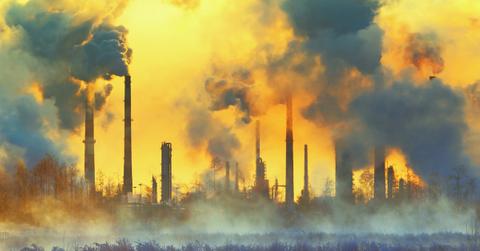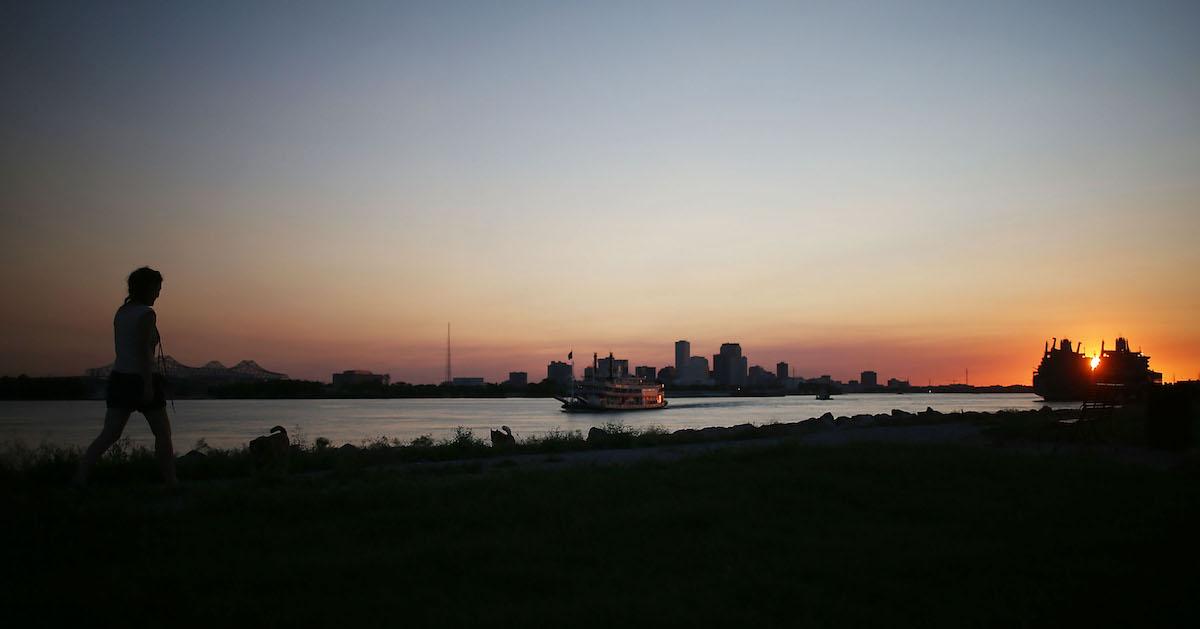Cancer Alley Might Be Our Country's Most Toxic Symbol of Environmental Racism
Published March 1 2023, 5:12 p.m. ET

For decades, a community in Louisiana has been known as Cancer Alley, due to the many petrochemical plants in the area. Everything about Cancer Alley exemplifies environmental racism and climate injustice — and those in power should be held responsible for the harm these facilities have caused.
So, in late February 2023, the U.S. Department of Justice (DOJ) and the Environmental Protection Agency (EPA) filed a paramount lawsuit against two of the petrochemical corporations that manage a neoprene factory in Cancer Alley, under the allegation that their actions breach the Clean Air Act.
Mary Hampton, president of Concerned Citizens of St. John the Baptist Parish, a group working to make the area a safer place to live, expressed her support for this federal suit— even though there are hundreds of other petrochemical plants in Cancer Alley that deserve to be sued, as well.
“It’s a positive move in the right direction,” Hampton stated, as per ABC News. “It’s been a long time coming.”
What is Cancer Alley exactly, and will these lawsuits against some of its most significant perpetrators actually make a difference? Keep reading for everything you need to know.

A woman walks atop an earthen levee on the Mississippi River in the Lower Ninth Ward as the Steamboat Natchez passes on August 26, 2015 in New Orleans, La.
What is Cancer Alley?
Much larger than your average alley, Cancer Alley is the nickname for an 85-mile stretch of land in Southeastern Louisiana, as per the Lung Cancer Center. The strip runs along the Mississippi River, from New Orleans to Baton Rouge — you can see Cancer Alley on a map here.
The alley is home to more than 200 petroleum chemical plants, according to Forensic Architecture. These plants make up about a quarter of the U.S.'s entire petrochemical production, as per the NRDC.
About 45,000 people live along Cancer Alley, and therefore deal with higher rates of cancer (namely, lung cancer) due to exposure to the harmful chemicals that the factories emit. In fact, seven of the country's 10 areas with the highest cancer risk are located in Cancer Alley, and Louisiana is one of the top 10 states in the country where residents are more likely to die from cancer.
Additionally, the NRDC notes that within Cancer Alley, most of these facilities are built close to Black communities, meaning that the health risks and diseases disproportionately affect Black residents.
Cancer Alley was once where many enslaved people were forced to work.
As noted by the UN, this area was once known as Plantation Country. Centuries ago, enslaved people were forced to work on the land in this part of Louisiana, as sugarcane plantations grew alongside the Mississippi River, Forensic Architecture noted.
Though slavery was legally abolished in 1865, many enslaved people's descendants still live on the land, meaning many of the communities in Cancer Alley are predominantly Black.
“The African American descendants of the enslaved people who once worked the land are today the primary victims of deadly environmental pollution that these petrochemical plants in their neighborhoods have caused,” stated UN experts.
"Here, environmental degradation and cancer risk manifest as the by-products of colonialism and slavery" noted Forensic Architecture.
In the 1980s, the area became known as Chemical Corridor, due to the toxic chemical plants that had been popping up. That's also when locals began organizing against the polluters, fighting for them to make major changes, and demanding that governments get involved. (But clearly, no industry leaders nor politicians have made enough change happen yet.)
As the connections between living near these poisonous facilities and getting cancer became much clearer, thanks to many studies on the topic, people started calling the area both Death Alley and Cancer Alley.
A lawsuit aims to hold one of Cancer Alley's biggest polluters accountable.
On Tuesday, Feb. 28, 2023, the Biden administration's DOJ lodged a lawsuit on behalf of the EPA and along with the U.S. Attorney’s Office for the Eastern District of Louisiana, against the companies: Denka Performance Elastomer and Dupont Specialty Products USA.
The two companies are responsible for managing Denka's neoprene manufacturing plant, located in LaPlace, La.
The suit is filed under Section 303 of the Clean Air Act, and declares that the plant poses "an imminent and substantial endangerment to public health and welfare due to the cancer risks from Denka’s chloroprene emissions," and demands that Denka significantly cut its chloroprene emissions.
"[Denka] has not moved far enough or fast enough to reduce emissions or ensure the safety of the surrounding community," said EPA Administrator Michael S. Regan said in a statement. "This action is not the first step we have taken to reduce risks to the people living in Saint John the Baptist Parish, and it will not be the last.” (LaPlace is located within Saint John the Baptist Parish.)
“The Justice Department’s environmental justice efforts require ensuring that every community, no matter its demographics, can breathe clean air and drink clean water. Our suit aims to stop Denka’s dangerous pollution,” added Associate Attorney General Vanita Gupta.

What is neoprene? Manufacturing it requires the toxic chemical chloroprene.
Neoprene is a thick, flexible, and waterproof fabric made from synthetic rubber. You've probably seen neoprene used to make items like laptop sleeves, wetsuits, beverage cozies, face masks, insulated lunch bags, sportswear, and even dresses and blouses.
Even though neoprene has a number of practical uses, unfortunately, it is made with a liquid raw material called chloroprene. According to the National Library of Medicine, chloroprene has a strong odor, it's flammable, and it's carcinogenic, aka cancer-causing. Being exposed to chloroprene has been proven to hurt the skin, lungs, kidneys, liver, central nervous system, and immune system.
The EPA noted that children are more vulnerable to the effects of mutagenic carcinogens such as chloroprene — and considering about 1,500 children attend schools right near the Denka neoprene factory, it's clear that Denka and Dupont should be held responsible for the harm they have caused.
Denka did not immediately respond to Green Matters' request for comment. However, in September 2022, a spokesperson for the company stated that a crisis “simply does not exist,” as per ABC News.
With ample evidence that chloroprene is carcinogenic to animals, growing evidence that it is carcinogenic to humans, and ample research on high cancer rates in Cancer Alley, it seems likely that Denka will have trouble finding a strong enough defense to win this lawsuit against the DOJ.
The fact that the federal government has not done more to shut down Cancer Alley is a huge failure, but this lawsuit is certainly a start.
And if the government does win this lawsuit and Denka does shut down, all that could seriously pave the way for more dominoes in Cancer Alley to fall.